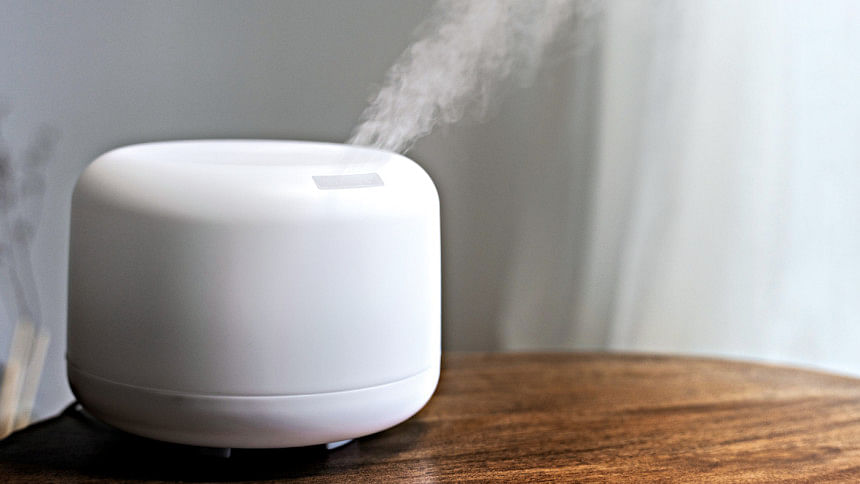Breathing Easy Confronting Indoor Air Pollution

Air pollution remains one of the most severe public health challenges of our time, ranking among the leading global causes of illness, disability, and premature death. According to the World Health Organization (WHO), around 99% of the world's population breathes air that exceeds permissible pollution limits, with low- and middle-income countries suffering the gravest consequences. In 2019 alone, air pollution was identified as the fourth leading cause of premature deaths globally.
While much of the public discourse centres on outdoor air pollution, indoor air quality—especially in the urban homes of developing nations like Bangladesh—is equally hazardous yet frequently overlooked. The factors influencing indoor air pollution are complex and multifaceted, including the size and structure of homes, the type of cooking fuel used, ventilation systems, and common household activities such as cooking, cleaning, smoking, and using mosquito repellents.
The Inextricable Link Between Indoor and Outdoor Pollution
A holistic discussion of indoor air pollution must acknowledge the undeniable correlation with outdoor pollution. Professor Dr Ahmad Kamruzzaman Majumder, from the Department of Environmental Science at Stamford University Bangladesh, emphasises this point:
"It is crucial to recognise the direct correlation between indoor and outdoor air pollution, with outdoor pollution contributing approximately 40% of the total air quality deterioration."
In other words, no matter how carefully one manages indoor environments, outdoor air quality seeps indoors, shaping the overall exposure levels that residents experience. This is particularly significant in densely populated urban settings where vehicle emissions, construction dust, and industrial pollution remain rampant.
The Socio-Spatial Dimension of Indoor Air Pollution
The socio-economic divide plays a critical role in determining exposure to indoor air pollution. Urban slums and low-income neighbourhoods often lack access to clean cooking fuels and improved stoves. In Bangladesh, wealthier urban families typically rely on electricity or natural gas, while lower-income peri-urban and rural households primarily depend on biomass fuels such as firewood, agricultural residues, animal dung, and even jute sticks. These fuels emit harmful pollutants that accumulate in poorly ventilated dwellings, heightening respiratory risks.
Furthermore, cooking habits also contribute significantly. The widespread preference for fried food in Bangladesh exacerbates indoor air quality issues. A shift towards boiled or steamed food not only improves health outcomes but also reduces indoor pollution.
The solution demands a broader societal transition towards renewable energy and sustainable cooking practices, particularly among the economically disadvantaged.

Temperature, Climate, and Interior Design: Overlooked Factors
Beyond socio-economic determinants, climate conditions and architectural choices impact indoor air quality. Professor Majumder notes:
"Temperature variations also have a significant impact on air pollution levels. During winter, pollution levels rise by approximately 65%. A study conducted in Dhaka revealed that, in winter, tree leaves in the city accumulate around 450 metric tonnes of dust, which subsequently contributes to indoor air pollution."
Bangladesh's tropical climate presents its own challenges. Architectural design must account for light, heat, and airflow. Architect Fardina Faridi, from Best Holding Ltd., explains:
"To ensure proper ventilation, it's important to maintain a balanced proportion of doors and windows. As a tropical country, having too many windows can result in excessive light and heat, so we should exercise caution. Additionally, an exhaust fan should be installed as standard."
Sustainable design choices—such as opting for eco-friendly materials, minimalistic interiors, and certified non-toxic finishes—can significantly reduce indoor air pollution. Faridi highlights the importance of adhering to LEED certification standards and the Carpet and Rug Institute (CRI) accreditation to ensure interior components, such as carpets and furnishings, are environmentally safe and contribute minimally to pollution levels.
Moving Beyond Individualistic Solutions
While affluent households may resort to air purifiers, this reflects an elitist, individualistic approach that fails to address the systemic nature of air pollution. Professor Majumder urges a more inclusive strategy:
"Natural ventilation plays a significant role in reducing indoor air pollution by up to 30%. While air purifiers can be useful for sensitive individuals, they should not substitute for comprehensive public health interventions. Ultimately, a holistic policy framework must be established to improve total air quality."
Thus, while technological solutions have their place, especially for vulnerable individuals, broader, community-wide actions are indispensable for lasting impact.
The Role of Monitoring and Awareness
Another preventive step involves monitoring indoor air quality. Low-cost sensors and detectors can help households track levels of volatile organic compounds (VOCs) or particulate matter. For example, the use of body sprays or cleaning agents can cause pollution spikes that often go unnoticed. Raising awareness about these invisible threats can help families make informed decisions.
Workplaces, schools, and public institutions can also benefit from indoor air monitoring, creating healthier environments for larger segments of society.
The Policy Landscape: A Call for Government Leadership
Policy intervention remains the linchpin of meaningful change. Professor Majumder reflects on Bangladesh's policy evolution:
"First and foremost, the government must take a proactive role in formulating strong policies to minimise and mitigate these risks. Previous initiatives, such as the Clean Air and Sustainable Environment (CASE) project and the Bangladesh Environmental Sustainability and Transformation (BEST) programme, have made notable progress. The Air Pollution Control Act enacted in 2022 is a step forward. However, it is concerning that this law remains primarily focused on outdoor pollution and does not establish indoor air quality standards."
The absence of enforceable indoor air standards leaves a significant gap. Air pollution control must be integrated into urban planning, housing regulations, and public health strategies.
Sustainable Living: The Way Forward
As we move further into the era of climate-conscious living, we must adopt an eco-friendly and holistic approach that treats air quality as a shared public good rather than an individual concern. Accreditation standards, sustainable interior choices, and clean energy transitions must be complemented by robust policy action and community engagement.
At the heart of good habitation lies the simple yet profound principle: healthy living stems not only from the materials we choose and the technologies we adopt but also from the habits we cultivate. A shift towards minimalism, hygiene, and eco-friendly practices can transform our homes into sanctuaries of well-being.
Ultimately, breathing clean air indoors is both a right and a responsibility. Only through collective action—guided by science, informed by tradition, and driven by policy—can we hope to build a future where every breath, inside and outside, is safe.

 For all latest news, follow The Daily Star's Google News channel.
For all latest news, follow The Daily Star's Google News channel. 



Comments